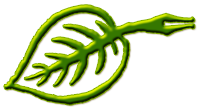First Stop: Geothermal Plant
Fresh off the plane, we arrived for a tour to the Hitaveita Sudurnesja--a geothermal energy plant in Reykjavik--bright and early at 8:30am. Created in 1974, this plant has advanced from containing one power plant to six as of 2008. The diagram shows a simplified version of how geothermal energy is harnessed: Cold water is pumped below ground, then warmed by mantle beneath earth's crust. As a result, hot water is forced upwards, and the resulting steam is used to power turbines which generate the electricity. The steam is also used to heat pipes of freshwater which is sent to residential homes-many homes do not even require kettles to boil water, as tap water is hot enough to enjoy a cup of tea!
Iceland is essentially built for geothermal energy-the country sits on the North Atlantic Ridge boundary, where two tectonic plates are gradually moving away from each other (at a rate of 2cm per year). As a result, magma is able to rise to the earth's crust and provide enough heat for geothermal energy to bew harnessed. In fact, 93% of houses in Iceland are now heated by geothermal energy.
We were also exposed to the staunch and prominent smell of Icelandic perfume-sulfur! Sulfur is in fact a by-product of hot water produced via geothermal processes. Even a strong sulfur scent is emitted from simply using hot tap water.
Perhaps one of the most admirable qualities of this plant is their recognition that they are continually in a state of learning from their past mistakes, and striving to improve upon them. An example of this is their new focus on having a net zero output of waste. Carbon dioxide is naturally emitted during the process of producing geothermal energy;however, Sudurnesja is now able to convert these CO2 emissions to methanol, which is then used to fuel vehicles.
Friday we had the privillege of meeting with the power couple Gunna and Anar regarding Iceland´s green maps initiative. This husband and wife team were the first to green map an entire country on an online database. You can view their complete green map at http://www.nature.is/greenmap/
Gunna is in fact an artist, not an environmental scientist. She is an inspiring individual, as she has a strong desire to utilize her passion (art) to make a postivie impact in Iceland´s field of environmental sustainbility. A green map is essentially a thematic map containing different symbols to show sustainability initiatives across a region-an example of different symbols include restaurants offering local foods, composting sites, habitats at risk, and cycling trails. A large scale green map of the Reykjavik area is shown below, with symbols of companies selling eco, fair trade, and certified organic products. The goal of this map is to highlight to Icelanders how they can make postivie choices to contribute to a sustainable environment and ecosystem. It is important to note that organizations do not pay to be on this map-it is simply a free resource for the public. Gunna noted that one of the biggest obstacles to keeping this green map running is receiving a continual supply of funding.
Their ecomap site has grown exponentially in popularity, now receiving up to 500 hits per day, mostly from Iceland, but many visits are from Europe and North America as well.
A key point we took from their presentation was that they will be happy to stop working on this eventually, but as long as there is a need for them to continue green mapping, they will do so. Their hope is that environmentally sustainable practices and initatives will become so ubiquitous throughout Iceland that it is no longer necesary to look up how to integrate sustainability into one's daily routine. Green mapping is clearly their passion: as they noted themselves, they have a strong desire to "leave somthing behind in life which they can be proud of", and clearly, green mapping is it!

